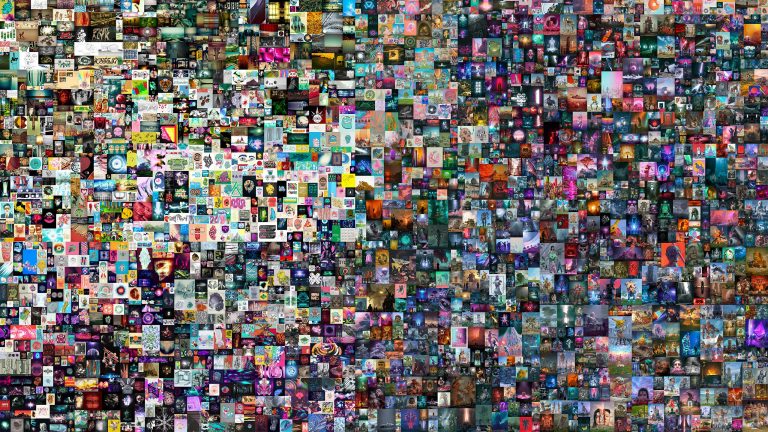NFT technology: how the main art trend of 2021 was formed

In 2021, the art world has changed. And this happened not because of a pandemic, but because of NFT technology. The introduction of blockchain and cryptocurrencies into the seemingly so conservative art sphere gave a powerful impetus to digital creativity, provided an impressive expansion of the circle of collectors at the expense of technogeeks who had never participated in auctions before, and gave an unprecedented inflow of money into the industry. At the end of the year, the NFT market is estimated at $22 billion compared to $100 million in 2020.
NFT technology: millions in numbers

NFT (non-fungible token) is a blockchain-based digital certificate, which guarantees the uniqueness of the object to which it is attached. The object can be either physical or virtual. Previously, it was almost impossible to prove ownership of an image or a video clip that was freely available on the Internet (that is why, for example, most works of video art are carefully protected from getting into the web), but now there is a clear and reliable mechanism for this, which functions on the same principle as cryptocurrencies.
In fact, NFTs are sold for cryptocurrency, most often Etherium (Ξ), because the certificate is based on the ether blockchain. But if a year ago such deals were something niche, narrowly specialized, and the largest auction houses, artists, and museums simply ignored the emerging trend, then in 2021, the fashion for NFT swept over everything.
The most important event was the sale in March of an NFT work by the artist Beeple EVERYDAYS: THE FIRST 5000 DAYS for $69.3 million. This deal set several records at once: the most expensive NFT in the world, the most expensive artwork sold online, the most expensive digital artwork… Even the number of people following the live auction was unprecedented.
– In the last two or three minutes, the total number of people who followed the auction, either on Christie’s website or through other platforms, was 22 million.
Six months later, Beeple returned with a new work, Human One, combining a high-tech installation with a series of videos from NFT. It sold for $29 million: though cheaper than EVERYDAYS, it was still fabulously expensive for an author whose work is not represented in any great museum.
Cryptopunks and bored monkeys
If the record sales of digital art, especially through the famous auction house, can still be understood in terms of traditional collector logic, the phenomenon of so-called collectibles, that is digital artifacts of non-artistic nature, is more difficult to explain. The funny but primitive NFT pictures produced in large thematic series and sold individually or in sets as “punks,” today could easily compete in price with the masterpieces of painting.
The first half of the year was spent under the sign of crypto-punks: tiny pixel images of men with different hairstyles and accessories. Actually, that’s where the NFT mania started – they were released back in 2017 and were initially given away for free, but since NFT technology doesn’t involve the ability to duplicate an object, cryptopunks turned out to be the ultimate resource. And a whole pyramid of speculation has grown on them. To date, the record holds CryptoPunk 7523 (an alien in a medical mask) – an unknown investor bought it at an auction at Sotheby’s for $11.754 million. On the site of the developer of cryptopunks – Larva Labs – the top sales occurred in March: images #3100 and #7804 went for Ξ4200 each, which at the time was the equivalent of $7.58 million, but today that amount of “ethers” can be exchanged already for $15.86 million.
In the second half of 2021, bored monkeys were in the spotlight. In contrast to the “old” punks, a series of 10,000 images of the charismatic primates was released very recently, on April 30 of this year, and sold out in a day – at a price in “ethers” equivalent to $200. But already in September for a set of 101 monkeys unknown paid $24.4 million, and a month later Ape #8817 went to a new owner for $3.4 million.
What can be done with such pictures? For example, you can put them on a watch face of a “smart” watch and flaunt them at thematic parties: fellow crypto-investors will be impressed. Although it’s unlikely that someone will buy such avatars for long-term storage. We suppose, the owner will be happy to get rid of the illusory asset as soon as he gets a profitable offer. Consequently, today it is an instrument of speculation in the first place, and a demonstration of one’s status in the second.
But it is possible that NFT pictures become a new currency, something like gold, that is a resource, the value of which is that its quantity is limited and it is impossible to counterfeit. And here the presence of a blockchain certificate is decisive.



